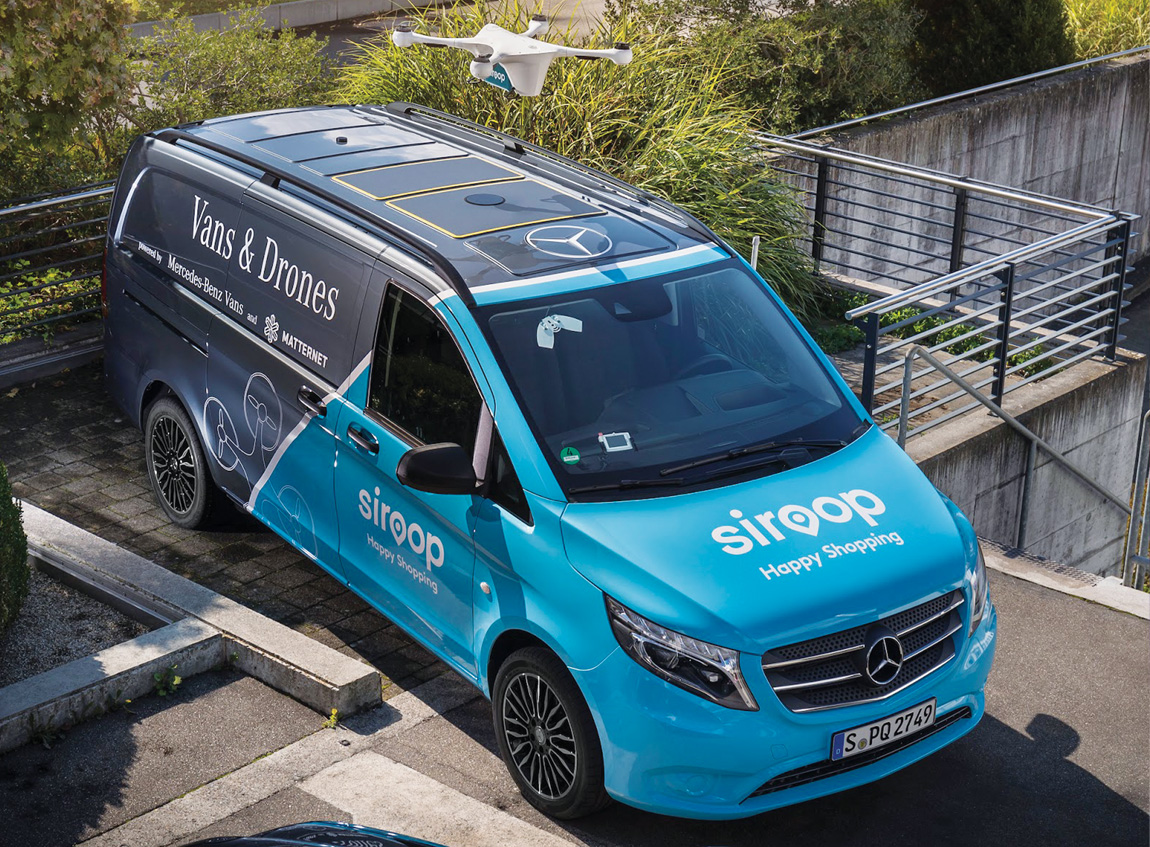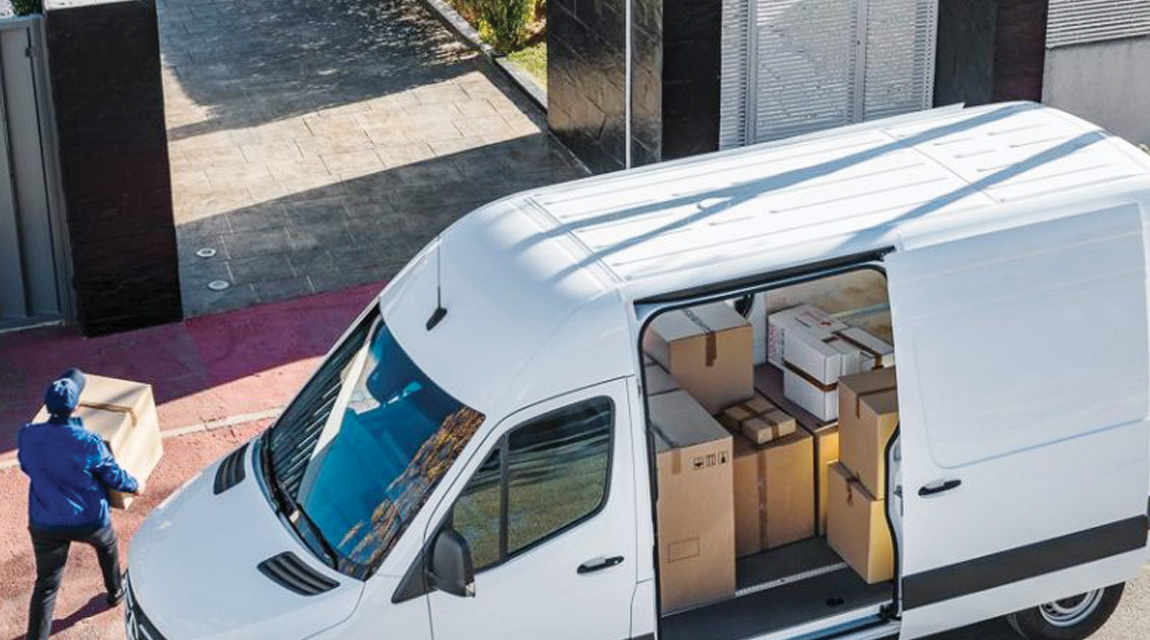A future for light commercial vehicles?

It is often up to the bakkie, van or light truck to make the difficult and time-sensitive last-mile delivery. MARISKA MORRIS asks whether innovations in the sector might result in these light commercial vehicles (LCVs) becoming redundant
From purchasing clothing online, having the monthly groceries delivered or simply ordering dinner from UberEats, society has become very reliant on the last-mile delivery – and subsequently LCVs. This dependency has its own challenges. Last-mile delivery is considered the most expensive leg of the supply chain.
According to Shelagh Dolan, last-mile delivery costs comprise 53 percent of the total shipping cost. This could increase as customers become less willing to pay a delivery fee. Dolan notes in an article for Business Insider: “With the growing ubiquity of free shipping, customers are less willing to foot a delivery fee, forcing retailers and logistics partners to shoulder the cost.”
In addition, South African transporters face unique challenges with poor road conditions in many rural areas and poorly marked township housing.
In an article for news website Bizcommunity, Bronwyn Williams notes: “The last-mile delivery problem, which relates to the high cost and logistical difficulty of delivering items to an individual address, rather than a central depo, is particularly acute outside of city bounds. In South Africa, it can cost more for an entrepreneur to send a parcel from Johannesburg city centre to Soweto than to a suburban address in Cape Town.”
The difficulty of managing last-mile delivery is echoed by Amanda Herson, director of e-commerce at Cape Union Mart Group. Herson is quoted by Lauren Hartzenberg in an article for Bizcommunity: “I believe that there are very few barriers to [e-commerce] growth and that [South Africa’s] curve is just slightly behind other more established countries.
“Last-mile delivery is still a challenge, but with the innovations around click and collect, and the expansion of locker programmes, I believe this can be solved.”

Emerging innovations in the last-mile delivery sector are vast. A popular international phenomenon is the use of drones in the last-mile delivery. Amazon tested its version of this in the United Kingdom (UK) in 2017. This year, DroneDek, a drone delivery system, was awarded the United States (US) patent to use drone technology in last-mile delivery.
“Shipping and receiving with DroneDek are made easy through its intuitive app. Users will receive alerts when their packages ship or arrive. Users will also be notified of what item has arrived and from whom,” Tom Ross-Joannou writes in an article for news organisation Post&Parcel.
He continues: “A heated and cooled cargo area will pave the way for pharmaceutical, and food and beverage delivery. DroneDek will operate using a solar-power supply, feature a heated door to operate in any climate and will host a charging station for delivery drones.”
Similar drone technology is used in Germany to deliver pharmaceuticals to the North Sea. United Parcel Service, Zipline and NGO Gavi all use drones to deliver blood to remote parts of Rwanda.
The introduction of this particular technology in South Africa might be challenging with the country’s stringent aeronautics legislation, which requires drone operators to register for an air service licence and remote operator certificate – a costly process.
A bigger threat is the boom of automated vehicles. While rural South Africa will remain dependent on traditional vehicles, due to poor road conditions, inner cities might soon enter the age of driverless vehicles. Many international countries are pushing for automated vehicles in the transport sector to resolve, among other things, the global shortage of drivers.
Many Western European countries, Russia and the US have tested driverless vehicles. While South Africa has more than enough drivers, the need to reduce costs might spur the country into an automated future.
The UK is particularly interested in automation. In an article for Post&Parcel, Ian Taylor notes that the UK Department for Transport (DfT) wants to explore whether electric vehicles can provide a better service.

He writes: “The DfT would like to hear evidence of how innovative logistics solutions, such as cargo consolidation centres, shared hubs and micro-depots, could help to alleviate the pressure on urban last-mile deliveries. Importantly, the DfT is inviting suggestions on how the delivery industry could be incentivised to take up clean, last-mile delivery options.”
A more immediate threat to transport operators managing LCVs in South Africa is crowdsourcing. Dolan explains: “With crowdsource technology, retailers, logistics partners, and consumers can connect directly with local, non-professional couriers who use their own transportation to make deliveries.
“Companies can get their online orders to customers faster, and customers can get their items when and where they want them.” A good example of this is UberEats, which connects the consumer with their choice of restaurant. A private individual then delivers the food to the consumer using their private vehicle.
However, in the meantime, transport operators can enjoy some innovations, such as What3Words and Wumdrop, aimed at easing the cost of last-mile delivery. What3Words is a geocoding system that gives a three by three-metre grid block an address.
“What3Words gives everyone, even residents of informal settlements, an easily locatable address that can then be used by couriers and emergency services,” Williams explains.
Wumdrop allows parcels to be delivered to a cellphone location rather than a physical address. Williams concludes: “This means that the courier finds the customer wherever they are, rather than having to meet them at their home or office at a specific time.”
Published by
Mariska Morris
focusmagsa




